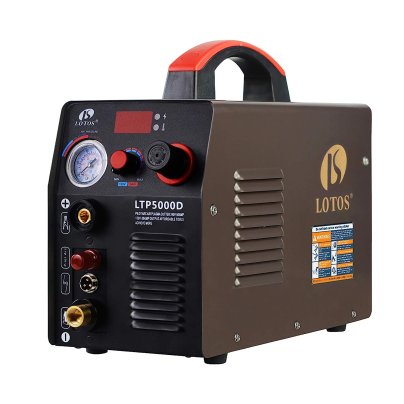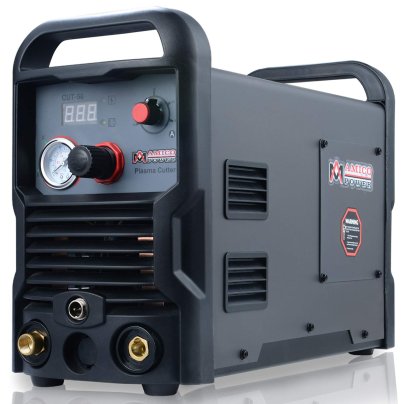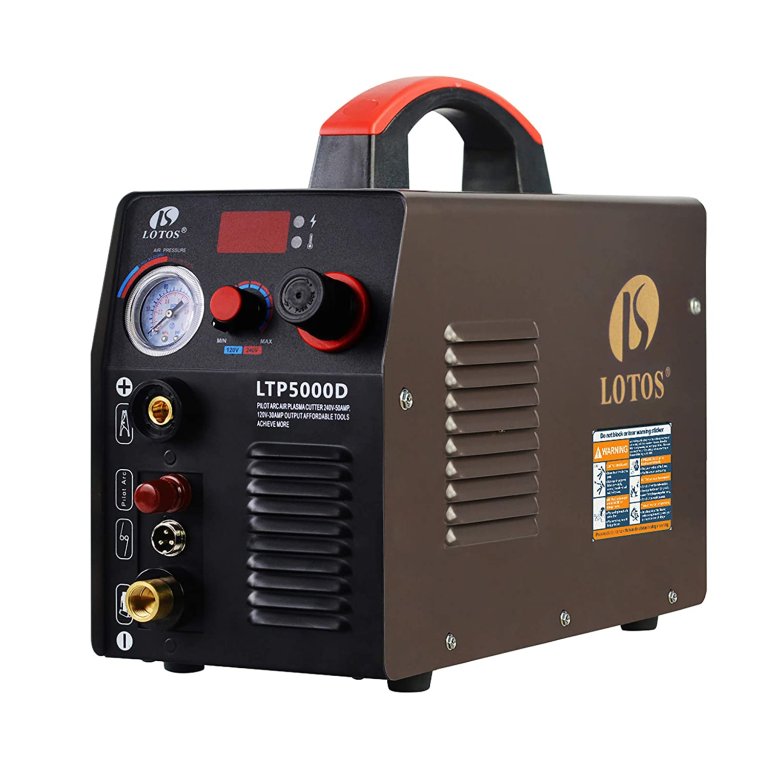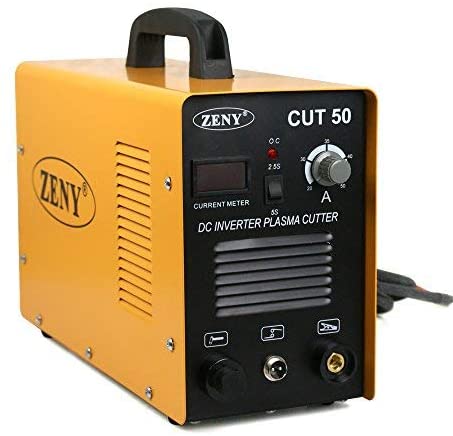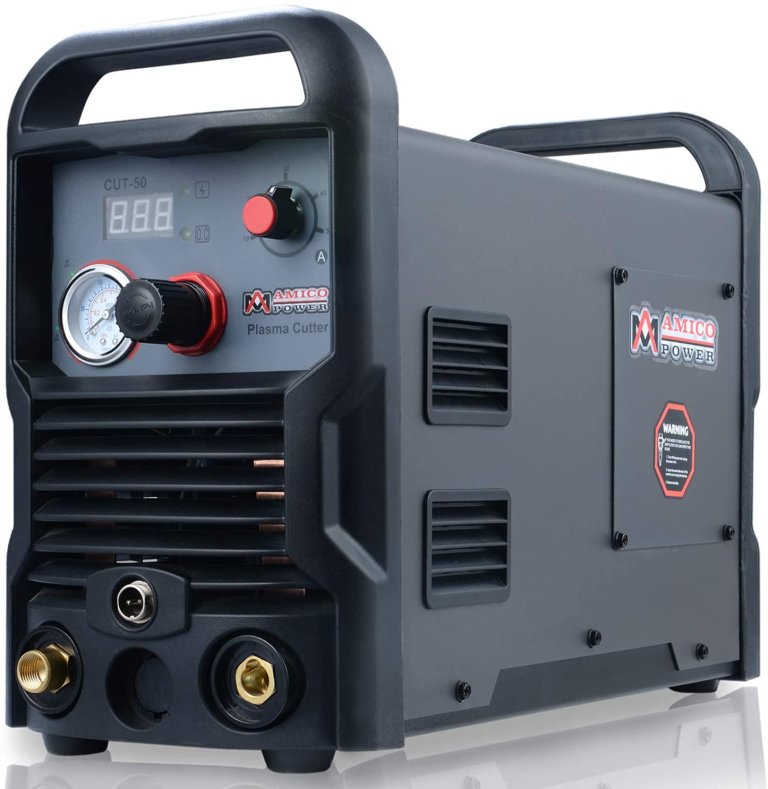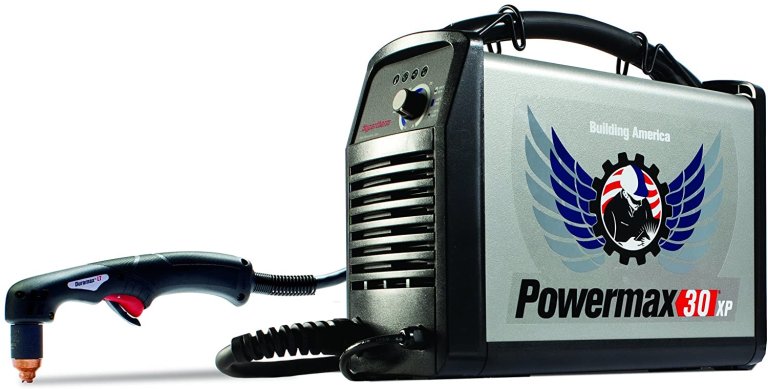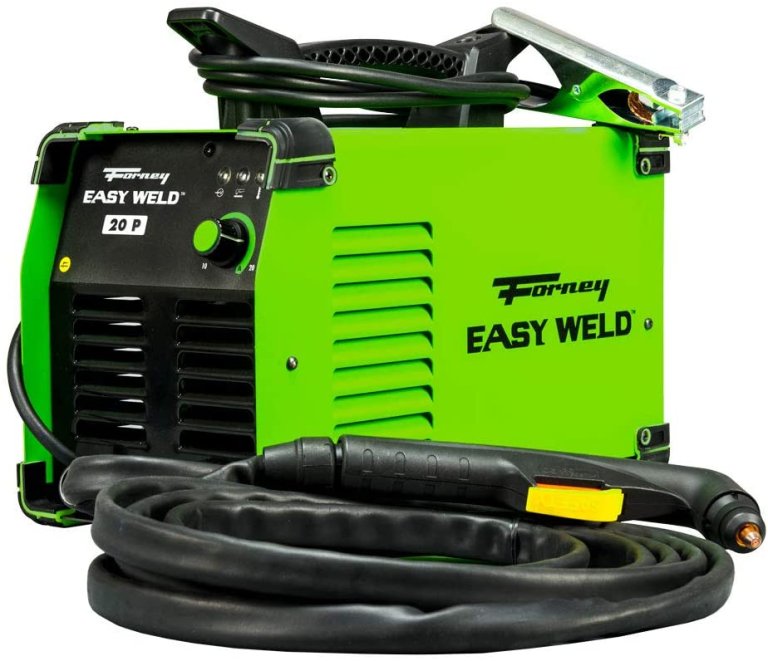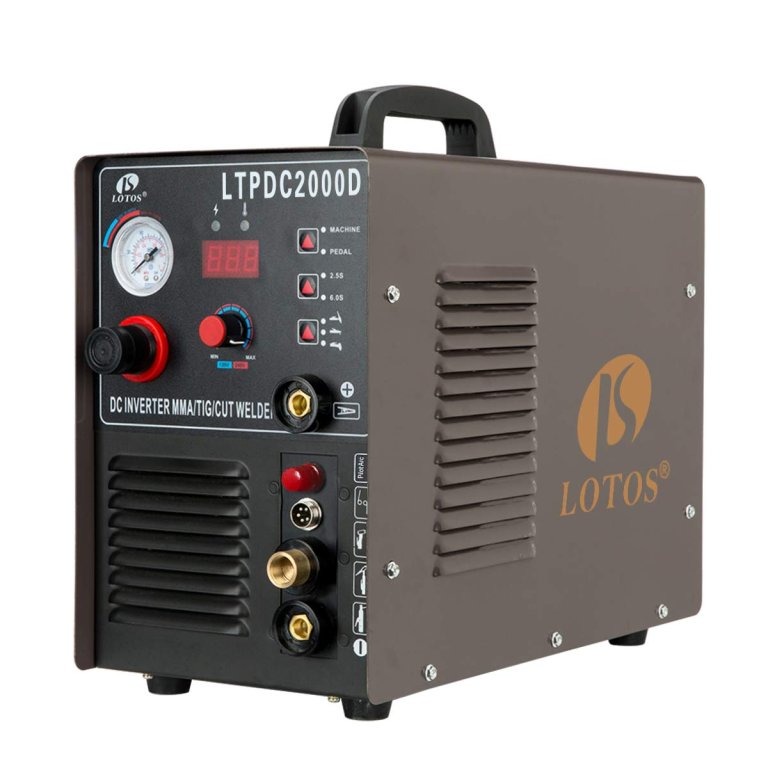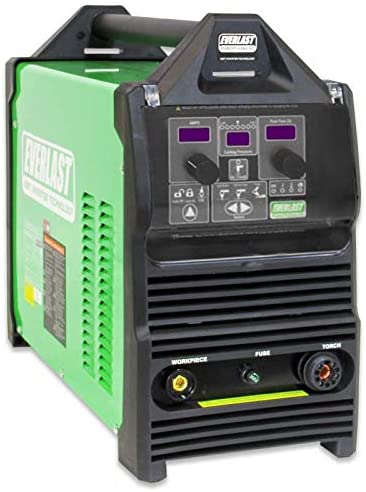We may earn revenue from the products available on this page and participate in affiliate programs. Learn more ›
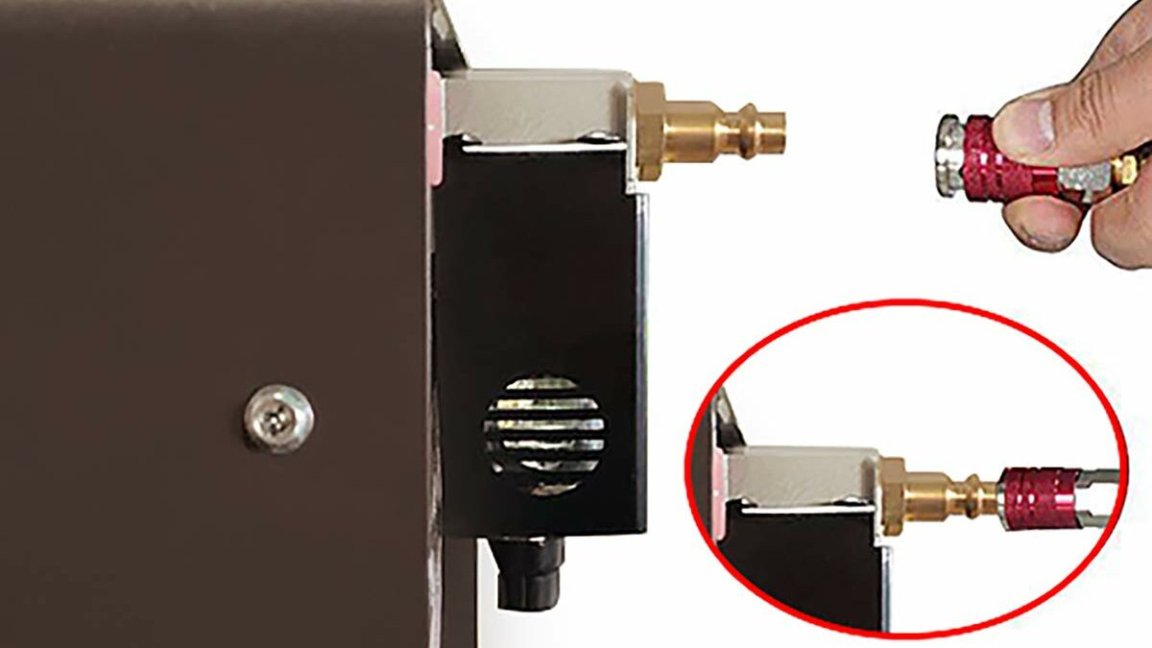
Designed to cut through thick and tough metals, plasma cutters are best suited for machine shops and heavy-duty construction applications. They rapidly heat up with compressed air or gas, and the arc torch is capable of reaching extremely hot temperatures. The small flame is then able to make a clean cut through tough metal and steel with ease. If you have a difficult job and need a high-quality plasma cutter, consider one of the following machines for your workshop.
Summary List
- Best Overall: Lotos 50Amp Non-Touch Pilot Arc Plasma Cutter
- Best Value: ZENY DC Inverter Plasma Cutter
- Best Industrial Grade: Cut-50, 50 Amp Pro Plasma Cutter
- Premium Pick: Hypertherm Powermax 30 XP Plasma Cutter
- Honorable Mention: Forney Easy Weld 20 P Plasma Cutter
- Honorable Mention: Lotos LTPDC2000D Non-Touch Pilot Arc Plasma Cutter
- Honorable Mention: Everlast 2020 PowerPlasma 62i 60 Amp Plasma Cutter
Best Plasma Cutters: Reviews & Recommendations
Best Overall
Lotos 50Amp Non-Touch Pilot Arc Plasma Cutter
Check Latest PriceBest Value
ZENY DC Inverter Plasma Cutter
Check Latest PriceBest Industrial Grade
Cut-50, 50 Amp Pro Plasma Cutter
Check Latest PricePremium Pick
Hypertherm Powermax 30 XP Plasma Cutter
Check Latest PriceHonorable Mention
Forney Easy Weld 20 P Plasma Cutter
Check Latest PriceHonorable Mention
Lotos LTPDC2000D Non-Touch Pilot Arc Plasma Cutter
Check Latest PriceHonorable Mention
Everlast 2020 PowerPlasma 62i 60 Amp Plasma Cutter
Check Latest PriceOur Verdict on the Best Plasma Cutters
For one of the most powerful and precise plasma cutters, consider the Lotos 50Amp Non-Touch Pilot Arc Plasma Cutter.
You can get the Zeny DC Inverter Plasma Cutter, which provides a clean and smooth cut at a much cheaper price.
Benefits of a Plasma Cutter
- Eliminates plate warping. A high definition plasma cutter has a fast cutting speed and significantly reduces the amount of heat transferred to the material. It prevents plate warping of thin materials (18-gauge to 1/4-inch). This issue commonly occurs when a conventional plasma cutter is used.
- Faster cutting speeds. When a high definition plasma cutter is used to cut metal up to two inches thick, it cuts it twice as fast as an oxyfuel cutter. The thinner the metal is, the faster it will cut it. A plasma cutter can cut thin metals up to 12 times faster than a traditional cutter. When you are able to cut more parts in less time, your productivity increases.
- Reduced dross. Oxyfuel cutting creates dross (an oxide slag) because of the chemical reactions between oxygen and steel. In order to be removed, the consolidated dross must be chiseled or grounded. But since a high definition plasma cutter uses electrically-charged, high-temperature gas, it melts metal, blowing the molten metal away from the cut. Grinding or chiseling is not necessary as any extra metal is gotten rid of.
- Versatility. A plasma cutter uses an electric arc process and can cut any material that conducts electricity. It can cut aluminum, copper, stainless steel, and non-ferrous materials. It can also cut a stack of metal plates. Oxyfuel cutters can’t do this.
Types of Plasma Cutters
Conventional Plasma Cutters
Conventional plasma cutters utilize air, oxygen, or nitrogen for cutting. They are more affordable than high definition plasma cutters and produce quality cuts. However, the cut surface will have an angle. The ratio of the minimum hole quality to plate thickness is 3:1. Most conventional plasma cutters operate at 65 amps to 200 amps. They are mostly used to cut mild steel. Conventional plasma cutters are typically used for home garage fabrication to midsize production. They are ideal for simple cuts or cuts that do not require intricate edges.
High Definition Plasma Cutters
High definition plasma cutters are useful where more intricate cutting is required or where the edge quality is of concern. They utilize a blend of gases and have smaller nozzles. The nozzle helps tighten the plasma stream, allowing you to cut parts more intricately. One gas in the blend acts as a shield and covers the plasma stream, keeping it straighter. Since a high definition plasma cutter has a more directed stream, it does not create consolidated dross on the cut. This does away with grounding and chiseling. A high definition plasma cutter is ideal for more demanding applications. It has a higher duty cycle and can run for 24 hours a day.
Plasma Cutter Pricing
- Under $500: These plasma cutters get the job done but do not have ergonomic designs or useful add-ons. They are ideal for occasional users
- $500-$1000: These plasma cutters do not have the best duty cycle or amperage rating. They may be controllable but lack good cutting capacity.
- $1000-$2000: The best plasma cutters cost between $1,500 and $2,000. They have all the features you may need for enhanced productivity, like inverters and excellent cutting capacity.
Key Features
Cutting Speed
This is a very important feature to look at. The thickness of the metal usually determines the cutting speed. Before you get a plasma cutter, it is important to compare the cutting speed to the thickness of the metal. There are three cutting standards: quality cuts, rated cuts, and severe cuts. A cutter with a quality cut rating takes a while to cut thicker materials. One with a rated cut rating cuts medium-thick steel at optimal cutting speed. A plasma cutter with a severe cut rating can cut very thick materials slowly.
Duty Cycle
This is another important feature to consider. The amperage usually determines the duty cycle of a plasma cutter. For example, a plasma cutter with high amperage output will have a better duty cycle than one with a low amperage output. If you want a plasma cutter that you can use continuously for long periods, buy one based on the thickness of the materials you usually deal with. Also check the maximum severance thickness.
Input Power
In order to work efficiently, plasma cutters need a high amount of electricity. They are usually designed to pull power from 110-volt or 220-volt power outlets. Every cutting machine has an amperage rating. Check the voltage of the power outlet to be used to ensure it can meet the minimum amperage requirements of the plasma cutter. It is also important to have a different circuit for your plasma cutter because when other machines are connected to the same circuit, the input power to your machine is reduced.
Air Supply
Most handheld plasma cutters use air for the cutting process. Some professionals use bottled nitrogen for cutting because it is less expensive than bottled air. They also believe that nitrogen produces less oxidation because it is drier than compressed air. Some cutting machines have built-in air compressors, which means you don’t have to carry bottled gas around.
Other Considerations
- Built-In Inverter. If you mostly work in remote sites where there is no access to power, it makes sense to get a plasma cutter with a built-in inverter. It is more expensive than other plasma cutters but will continue working even when there is no electricity available. Most plasma cutters with built-in inverters are portable
- Type of Start. To initiate a pilot arc, a plasma cutter can either use a contact start or a high-frequency start. If you’ll be using your machine near electronic devices such as computers, get a plasma cutter with a contact start. A unit with a high-frequency start will affect the functioning of the electronic appliances. A plasma cutter with a contact start also allows you to position the torch more accurately because it creates a visible pilot arc.
Tips
- Make sure the power source you are plugging the plasma cutter into can handle the machine. If not, you may end up tripping a breaker and shutting off the power.
- Wear protective eyewear to avoid any slag or other debris from getting in your eyes.
- Always wear a thick pair of gloves when operating the cutter. They will ensure your hands don’t get dangerously burned. Always use caution when operating it, and do not get your body close to the arc.
- It will get hot when operating a plasma cutter, so you will want to ensure you have someplace to cool down if you get overheated.
- Always make sure the plasma cutter is turned off when you are finished using it and any metal is removed from beneath the torch. The pilot arc will take time to cool down and may warp or bend the metal if it’s left unattended.
FAQs
A: You will need a reliable and functional air compressor and air hose to ensure the plasma cutter works properly. Many may not come with a plug for the air hose, so you will need to check with the manufacturer before buying a plasma cutter.
A: Since it is made for cutting thick steel and metals, the pilot arc will reach extremely dangerous temperatures. Use caution when handling a plasma cutter as they can reach temperatures of up to 45,000 degrees Fahrenheit.
A: It depends on what you are cutting and how you want to cut it. If you just need to slice one piece it shouldn’t take more than a few seconds. If you are making small precise cuts, then it can take a few minutes. Always work slowly and methodically to make sure you stay safe.
